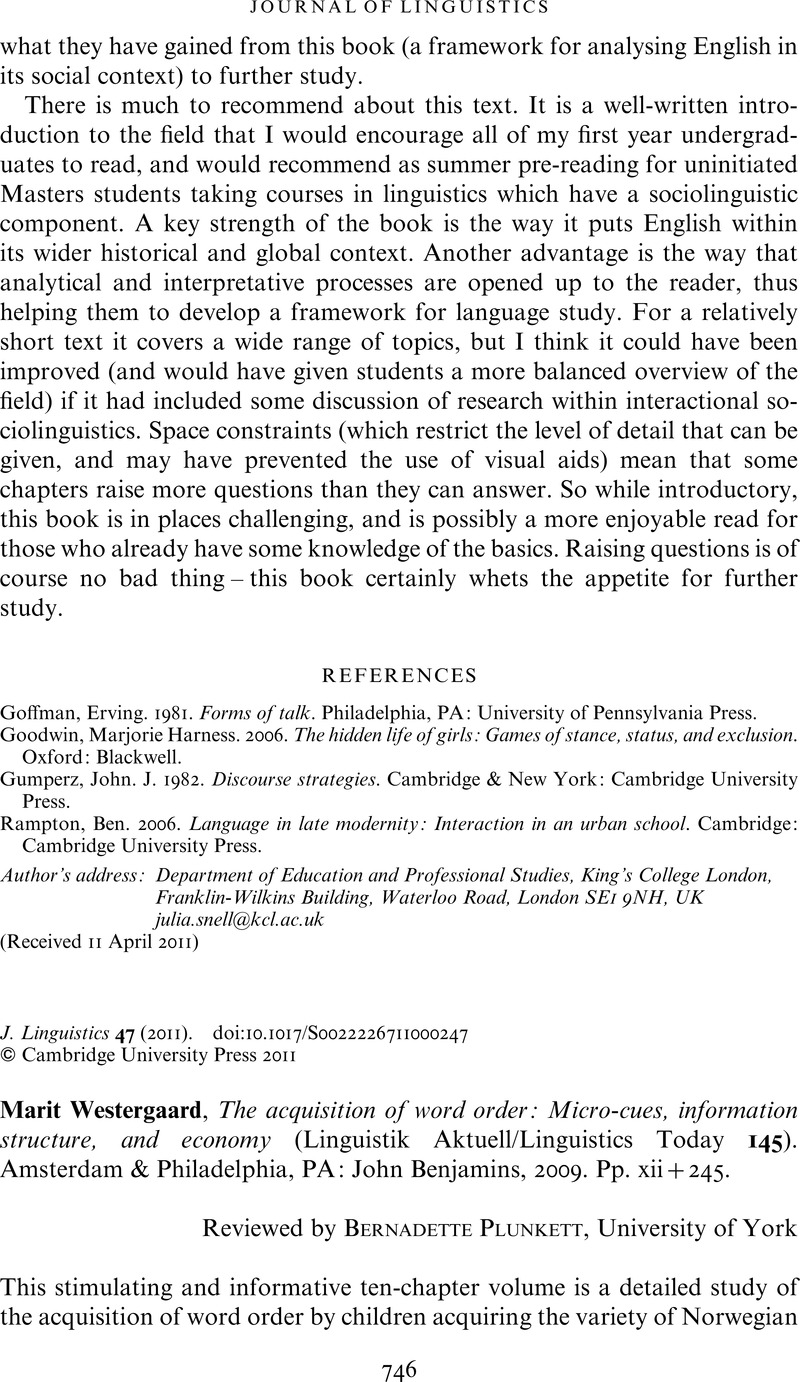Crossref Citations
This article has been cited by the following publications. This list is generated based on data provided by Crossref.
Akbarov, Azamat
and
Đapo, Larisa
2016.
"I am years seven old." Acquisition of English word order by Bosnian and Turkish children.
English Studies at NBU,
Vol. 2,
Issue. 1,
p.
59.
Xiang, Mingyou
2017.
Toward a Neo-economy Principle in pragmatics.
Journal of Pragmatics,
Vol. 107,
Issue. ,
p.
31.





